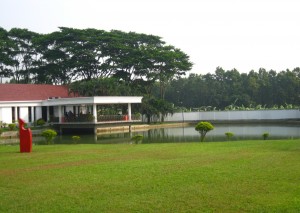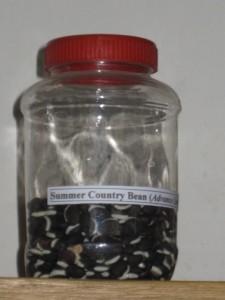BRAC (formerly an acronym for the Bangladesh Rural Advancement Committee) is known world-wide for providing microfinance, education, and health services to poor people. Well-established in Bangladesh since 1972, it has since expanded across Asia and into Sub-Saharan Africa. It receives support from individual donations and grants from the big funders such as the Nike and the Bill and Melinda Gates Foundations, but most of BRAC’s budget comes primarily from the profits of its own businesses. It runs several food-related businesses, and it also has a string of retail stores (called Aarong) that sell local crafts, clothing, accessories, and home décor items. Less well known but also impressive is BRAC’s support of agricultural research.
With BRAC as its host, the GAAP initiative held its mid-term meeting in November 2011 at the idyllic setting of the BRAC Centre for Development Management in Rajendrapur, Bangladesh. GAAP has two projects working in Bangladesh. One, implemented by BRAC, is part of its larger “Challenging the Frontiers of Poverty Reduction” program that assists women in ultrapoor households to obtain and manage income-generating assets. The second project is implemented by CARE/Bangladesh, “Strengthening the Dairy Value Chain.”
About a half-hour’s drive through small farms and suburbs takes you to Gazipur, the site of one of BRAC’s two agricultural centers. Members of the GAAP team took a
field trip prior to the start of the workshop to the Gazipur agricultural center whose work is supported by BRAC. The group was accompanied by BRAC research and evaluation team members, including Narayan Chandra Das and Wamec Raza. Arriving at the research station, the team was welcomed by Center staff. They provided an overview of the station’s activities and their relationships with other national and international agricultural research programs. Many agricultural offices are located in Gazipur. The center meeting room in which we met was lined with examples of the many varieties of vegetable, legumes, and grain seeds produced and processed by BRAC. The NGO started its production of seed in 1996, growing them on its own fields as well as from those of farmers under contract.
A quick tour of the test plots revealed neat fields at various stages of growth. Scientists at the center described on-going research testing different vegetable and rice varieties. They have been testing both Asian and Africa rice varieties seeking quickly maturing and higher yielding strains that could help Bangladesh to improve its food security. These improved varieties, bred for greater tolerance to extreme weather conditions such as drought or flood, as well as for higher yields and pest resistance, are made available to small farmers in across Bangladesh.
The center employs both men and women in the fields, offices, and as extension agents. Increasingly BRAC’s agricultural programming is expanding a focus on productivity and food security to address the linked issues of environmental sustainability, adaptation to climate change, and income-generating opportunities. The visit to the center helped the GAAP team
appreciate the many dimensions of BRAC’s activities in agriculture.

Photo credit: Dee Rubin

